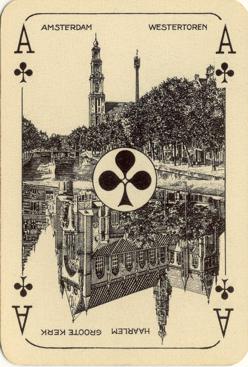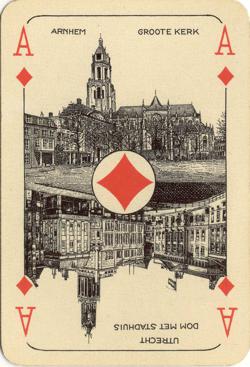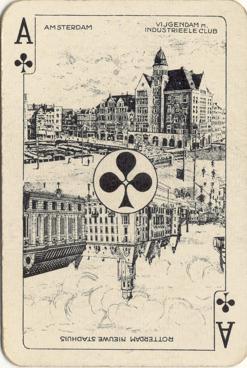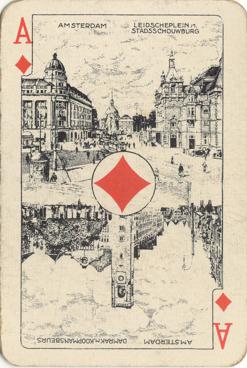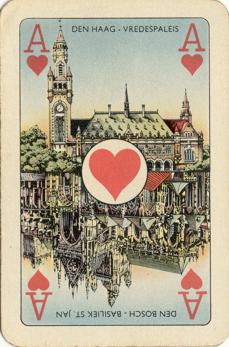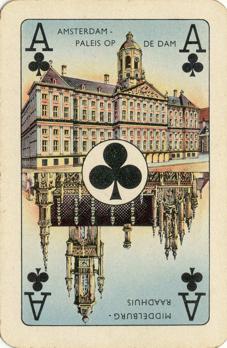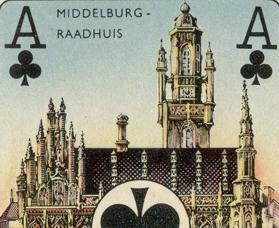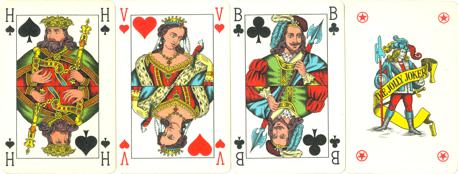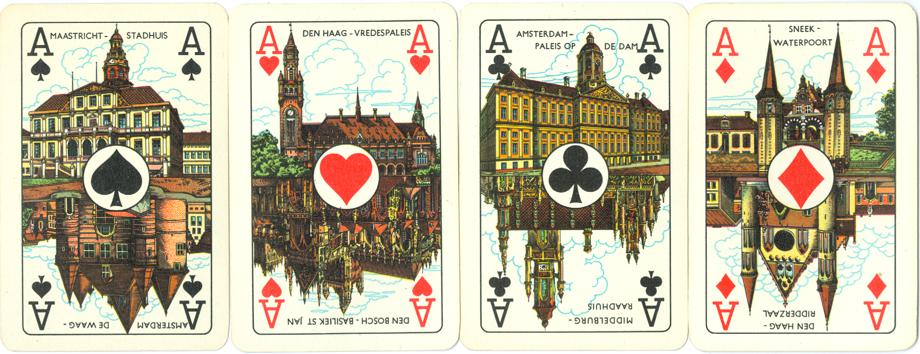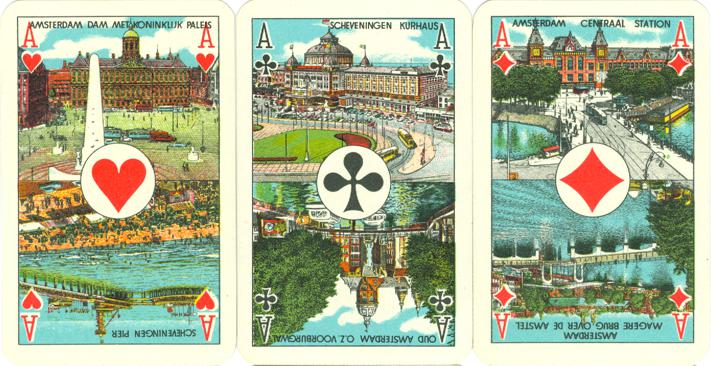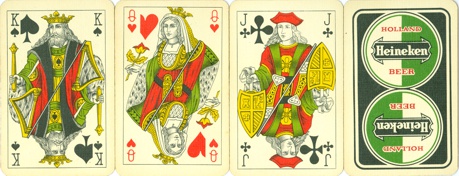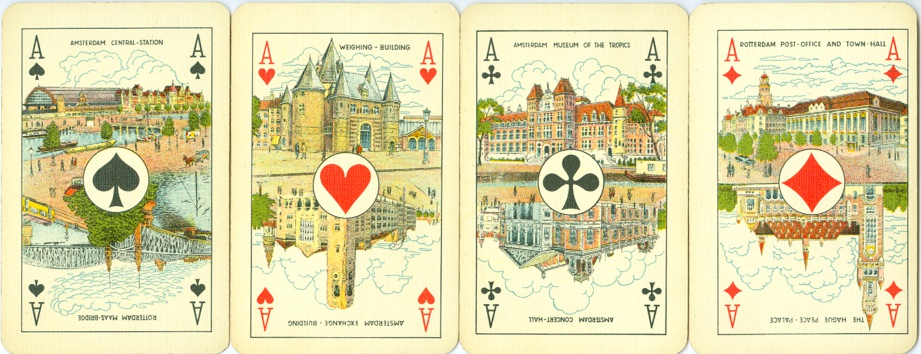|
The maker and
country were easy: the name of B.P. Grimaud and Paris is printed on
every court card. The –for the French rather unusual- Frankfurt
pattern was used on the courts, probably because it was thought to be
recognizable enough for the Dutch card players. The
cards have no indices, so it could be late 19th century or early 20th
century. The timeless design on the backs doesn't help either, but
there are Dutch scenic aces with the deck. The aces are printed in b/w
and show scenes from 8 different Dutch cities. In this set the most
interesting picture is that of the Royal Palace in Amsterdam. |

|
|
Besides
the Royal palace and the New Church, there are two other features in the
picture:
the monument in front of the palace and the electric trams. |
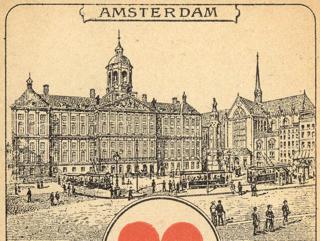 |
The
monument was officially called "De Eendracht", but commonly referred
to as "Naatje". It was
erected on the Dam square in 1856 to commemorate the 25th anniversary of
the "Ten Day Raid", a short and successful military campaign against
rebellious Belgians, that nevertheless lead to the sovereignty of
Belgium. Maybe it was because the artist was originally Flemish, but his
chosen material was of such poor quality that decay set in rapidly and
the monument had to be removed in 1914. The electric trams of line 1 and
2, that had stops on the Dam square, were not in use until 1904. These
two features in the picture will date the scene between 1904 and 1914.
With this information we have dated the deck as around 1910. |


